
Free counters provided by Honesty.com.
The Daguerreotype
The first photograph, the daguerreotype, was made on a silver-coated
("brazed") copper plate, which was, for all practical purposes,
a mirror. The sensitizing agent was iodine, the developing agent was mercury.
Once exposed in a camera and developed, it became a photograph on a mirror.
If you will move your head while looking at a daguerreotype, you will see
the picture turn from positive to negative and back again.
Invented in France by Louis J.M. Daguerre, the daguerreotype was introduced
in 1839. Peak years of manufacture were 1852 to 1854 and it was seldom made
after 1860.
When found today they may be in a complete case, a half case (the lid missing)
or no case. Examples of all three are on these Web pages.
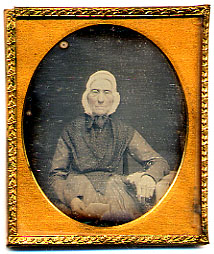 More Old Lady...
More Old Lady...
Daguerreotype of an old lady, born about 1760, who may have remembered with
crystal clarity the American Revolution. Taken in the mid-1840s, this was
probably the only photograph taken of her in her life. It's fascinating
to think the lady pictured held this very photo in her hands and exclaimed,
"My land, that's me!!" 6th plate.
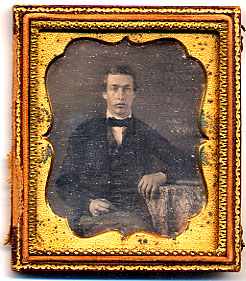 More Man with Book...
More Man with Book...
A typical daguerreotype. The portrait is clear but the brass mat is badly
spotted. (The double image of the photo is caused by the class cover of
the dag case reflecting off my scanner.) This dag dates to the late 1840s,
about the time of the Mexican War. 6th plate.
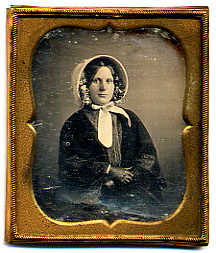 More Lady with Flowered Bonnet...
More Lady with Flowered Bonnet...
A beautiful daguerreotype of a young lady, ca. 1848. Notice the flowers
inside her bonnet, as was the style at the time. 6th plate.
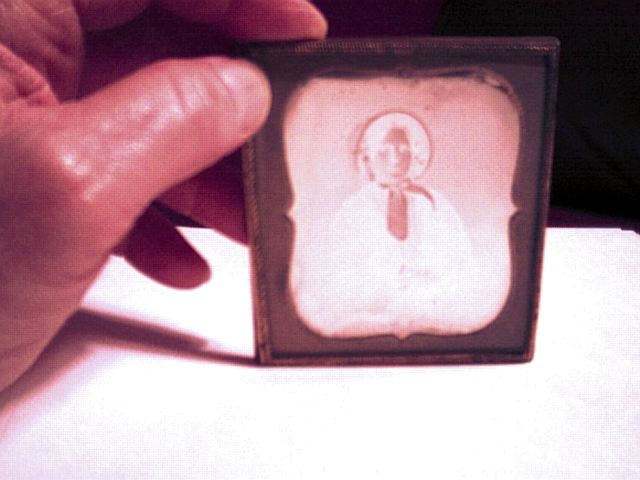
The "Lady with Flowered Bonnet" daguerrerotype, tilted to show
it's negative effect, as mentioned at the top.
Note the proper use of the specially designed tilting mechanism (left),
developed at great expense just for this application.
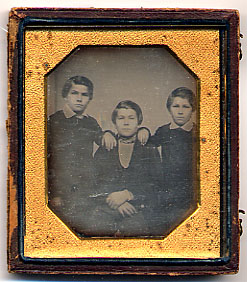 More Three Brothers...
More Three Brothers...
Daguerreotype of three brothers, ca. 1844. Chances are excellent that one,
two or even all three of these boys would fight in the Civil War, which
was still the better part of a generation in the future. 6th plate.
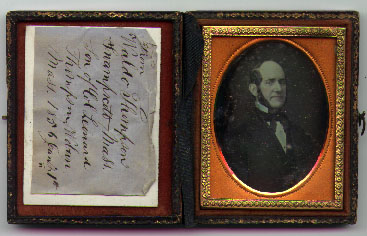 MoreWaldo...
MoreWaldo...
A highly desirable item - an identified daguerreotype: "Waldo Thompson,
Swampscott, Mass. Son of Col. Leonard Thompson, Woburn, Mass. 1856 Jan 21st."
9th plate.
 More Dag Jewelry...
More Dag Jewelry...
A tiny daguerreotype of a bearded man that originally was set in some type
of jewelry which is no longer present.
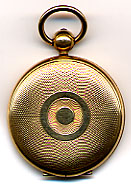
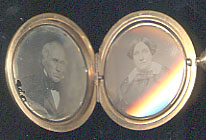 More locket...
More locket...
Locket containing daguerreotypes of an elderly couple, both of them obviously
born well before the year 1800. This is a fine example of the many types
of jewelry fashioned for use as photo showcases during the mid-1800s. This
locket has been opened and closed so often during the past century and a
half that it's very difficult to open it today.
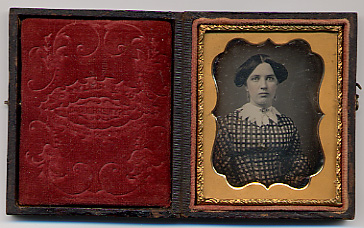 More Pensive Lady...
More Pensive Lady...
Daguerreotype of a beautiful young lady ca. 1855, made by Tyler & Co.
of Boston (note the imbossed red pad). The business card included behind
the image claims they made 500 dags a day. 9th plate.
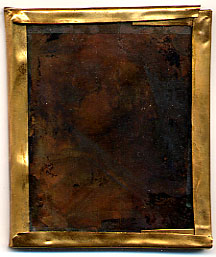
The back of a daguerreotype, showing the tarnished copper.
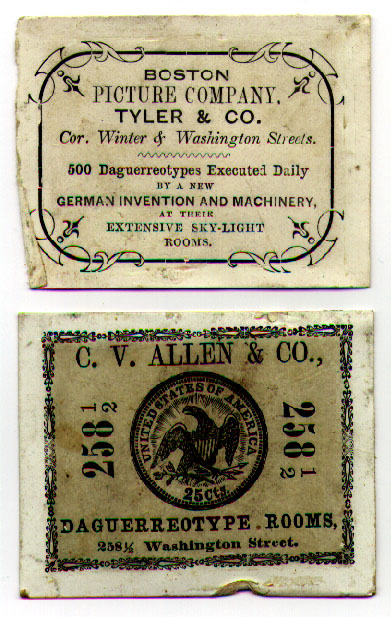
Typical daguerreian artist's (photographer's) business cards included with
the daguerreotypes, enlarged to twice actual size (200%). The design on
the lower card was copied from the silver quarter dollar of the day. The
design "with rays" around the eagle was only made in one year,
1853. From that we know that the dag was not made before that year but could
have been made in any year afterward.
 More Old Lady...
More Old Lady... More Man with Book...
More Man with Book... More Lady with Flowered Bonnet...
More Lady with Flowered Bonnet...
 More Three Brothers...
More Three Brothers... MoreWaldo...
MoreWaldo... More Dag Jewelry...
More Dag Jewelry...
 More locket...
More locket... More Pensive Lady...
More Pensive Lady...
